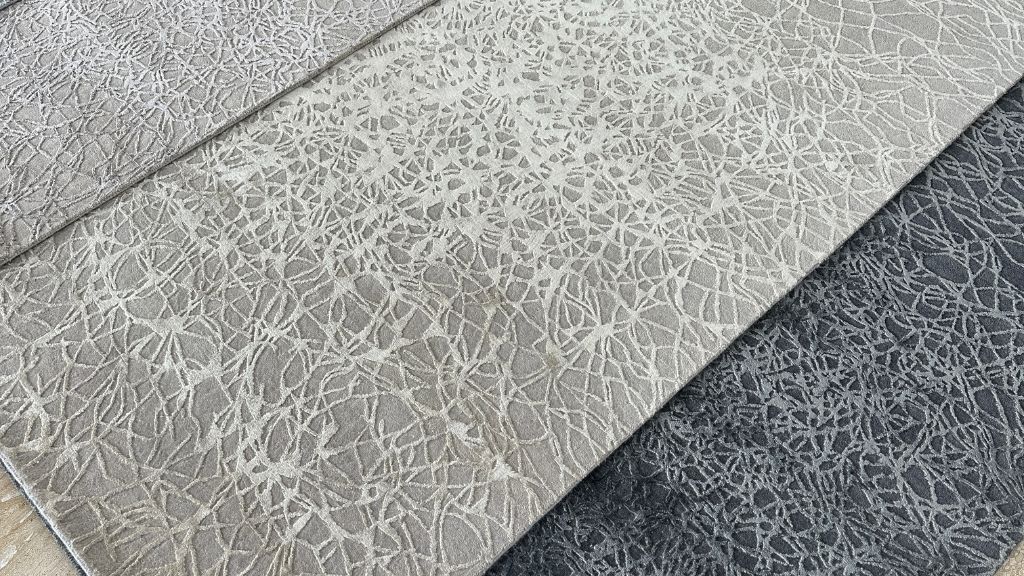In the realm of interior design, rugs have long been revered for their practicality and comfort. However, in the contemporary design landscape, they are emerging as powerful tools of aesthetic expression. Beyond their utilitarian role, modern rugs are increasingly becoming focal points in interior spaces, captivating attention with their innovative designs and artistic flair. In this exploration, we delve into the transformative journey of rug design, navigating through the intersection of functionality and artistry.
The Evolution of Rug Design:
Carpets and Rugs, once primarily crafted for warmth and practicality, have undergone a remarkable evolution over the centuries. From the intricate patterns of Persian rugs to the geometric minimalism of Scandinavian designs, each era has left its imprint on rug aesthetics. However, the modern era presents a unique blend of tradition and innovation as designers push the boundaries of creativity to redefine the very essence of rug design.
Functionality Redefined:
While comfort remains a crucial aspect of rug design, modern creations go beyond conventional expectations. Cutting-edge materials, advanced weaving techniques, and a fusion of traditional craftsmanship with contemporary technology have paved the way for rugs that not only soothe the feet but also stimulate the senses. Whether it’s the luxurious feel of silk or the eco-friendly appeal of recycled materials, modern rugs are designed to engage with the user on a multi-sensory level.
The Artistry of Pattern and Color:
In the world of modern rug design, patterns and colours take centre stage, offering a canvas for artistic expression. Designers are no longer confined to traditional motifs; instead, they draw inspiration from a myriad of sources, including nature, abstract art, and cultural influences. The result is a kaleidoscope of designs that range from bold and vibrant to subtle and sophisticated. These rugs not only complement the existing decor but also have the power to become statement pieces that define the entire space.
Breaking Geometric Boundaries:
One of the defining characteristics of modern area rugs is their departure from rigid geometric shapes. While traditional rugs often adhere to symmetrical patterns, contemporary designs embrace asymmetry and irregularity. Free-form shapes and abstract compositions contribute to a sense of movement and dynamism, challenging the observer to perceive the rug as more than just a floor covering. This departure from the norm reflects a broader shift in design philosophy, where imperfections are celebrated as unique expressions of creativity.
Texture as a Tactile Experience:
Modern rugs invite touch as much as they do visual appreciation. The exploration of textures has become a key element in rug design, with designers experimenting with different materials and pile heights to create tactile experiences. From the plush softness of shaggy rugs to the sleek elegance of flat weaves, the tactile qualities of modern rugs add another layer of richness to the overall design narrative. Homeowners are no longer merely decorating their floors; they are curating sensory experiences within their living spaces.
Cultural Fusion and Global Inspirations:
As the world becomes more interconnected, the Rugs Collection has become a melting pot of cultural influences. Designers draw inspiration from diverse traditions, merging elements from various cultures to create rugs that tell a global story. Whether it’s the vibrant hues of Moroccan rugs or the intricate motifs of African textiles, modern rugs celebrate the beauty of cultural diversity. This fusion not only adds visual interest but also deepens the narrative embedded in each rug, inviting users to connect with different parts of the world through design.
Sustainability in Design:
In an era where environmental consciousness is paramount, modern rug designers are embracing sustainable practices. From using recycled materials to employing eco-friendly dyeing processes, the industry is shifting towards a more sustainable future. This commitment to environmental responsibility not only aligns with contemporary values but also contributes to the overall narrative of conscious living. A modern rug is not just a piece of decor; it is a conscious choice towards a more sustainable and responsible lifestyle.
Conclusion:
Beyond the traditional notions of comfort and functionality, modern rug design has transcended into the realm of art. Through a harmonious blend of form and function, contemporary rugs have become instrumental in shaping the aesthetic identity of living spaces. From embracing cultural diversity to prioritizing sustainability, the evolution of rug design reflects the broader shifts in societal values and design philosophies. As we step into an era where every element of our living spaces is a reflection of our identity, modern Buy Handmade Rugs & Carpets Online in India stands as both a canvas for artistic expression and a testament to the evolving aesthetics of our times.

